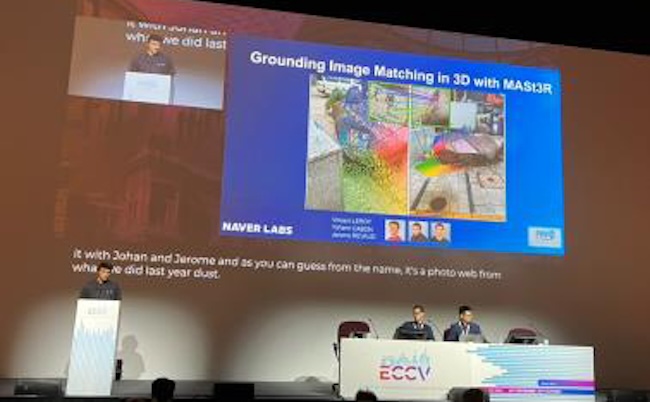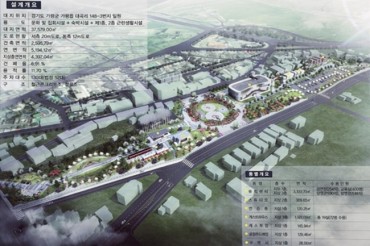
Naver is building substantial technological expertise in spatial intelligence, a field emerging as the next frontier beyond artificial intelligence (AI). (Image courtesy of Naver)
SEOUL, Oct. 28 (Korea Bizwire) – Naver is building substantial technological expertise in spatial intelligence, a field emerging as the next frontier beyond artificial intelligence (AI).
According to ICT industry sources on October 27, Naver Labs, the company’s technology research subsidiary, has accumulated 521 patents in spatial intelligence since its establishment in 2017.
These patents cover various areas including digital twins, AR/VR (augmented and virtual reality), robotics, and autonomous driving. This represents a more than fivefold increase from the 80 patents the company held when it first participated in CES in 2019.
Spatial intelligence technology enables computers to understand and interact with the physical world through vision AI, similar to how humans perceive and respond to their environment through visual processing.
This next-generation technology, focused on understanding and operating in three-dimensional physical spaces, differs from generative AI, which primarily operates in two-dimensional web environments.
The company’s focus on spatial intelligence has intensified significantly, with 100 of the 130 patents filed this year (77%) related to this field. This marks a substantial increase from 2017, when spatial intelligence patents represented only 27% of Naver Labs’ total patent portfolio.
The growth in spatial intelligence patent filings shows steady expansion, with 29 patents in 2018, rising to 33 in 2019, 62 in 2020, reaching a peak of 117 in 2021, followed by 71 in 2022, and 91 in 2023.
Notable patents include control methods for indoor autonomous robots (2016), 3D map generation using aerial photography (2019), and robot-friendly building systems (2021). Many of these technologies have been successfully implemented in Naver’s second headquarters building, 1784.
Recent patents filed in 2023 cover robot control systems enabling interaction with various facilities, robot path generation reflecting spatial policies, and bird’s-eye view information extraction systems. The company has also filed at least five patents this year related to 3D Vision Foundation Models (VFM).
Naver Labs’ expertise has gained international recognition. The company recently won first place in two categories at ECCV 2024, a prestigious computer vision conference in Italy. In 2019, its R2D2 visual localization technology outperformed global tech giants including Google and Apple at CVPR.
This technological prowess reportedly helped Naver secure a digital twin platform construction project in Saudi Arabia.
Spatial intelligence is gaining prominence globally. Stanford professor Fei-Fei Li’s startup Worldlabs, focused on spatial intelligence development, was valued at over $1 billion at launch. Li described spatial intelligence at a TED Conference in May as “algorithms that understand the location, relationships, and interactions of objects in the real 3D world and predict what will happen next.”
NVIDIA CEO Jensen Huang has also emphasized spatial intelligence, describing AI’s future as systems that understand physical laws.
A Naver spokesperson stated, “We expect the achievements accumulated over many years by Naver Labs’ Korean and European researchers in the emerging field of spatial intelligence to find increasing practical applications.”
Kevin Lee (kevinlee@koreabizwire.com)






